Creative decoupage ideas for home

Decoupage technique is suitable for those who want to add individuality, comfort and beauty to their interior. This handicraft is highly valued all over the world, because it is with it that things capture a piece of love and warmth of their master. Decoupage translated from French means "cut", the technique involves gluing cut pictures on the surface of objects.
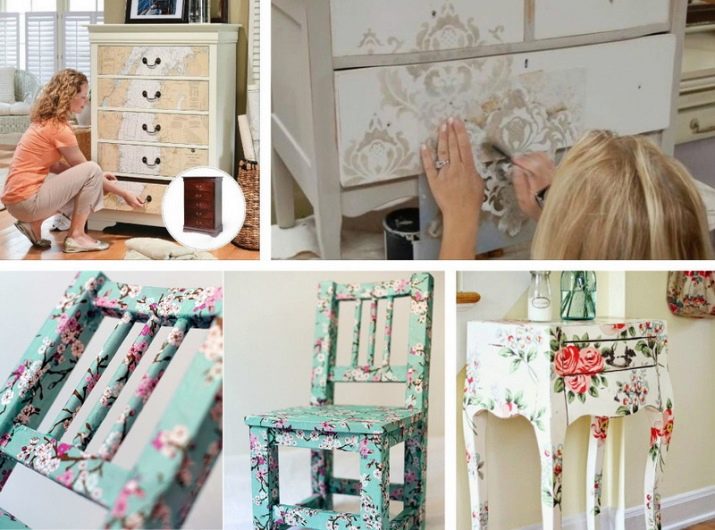
What do you need to work?
Better to start changing your interior with small items. Then decoupage can be transferred to furniture and finished with walls and floors. The amount of work will depend on the patience, desire and skill of the master. For decoration, you should stock up on the following tools and materials.
- They choose any picture on paper, for this they use magazines, colored napkins, posters, newspapers, photographs, drawings from wallpaper. In handicraft stores, you can buy ready-made decoupage cards or rice paper.
- Plaster primer or compound for difficult surfaces.
- Tonal acrylic paint.
- Decoupage glue or PVA, diluted with water in equal parts.
- Varnish for the selected surface type and topcoat.
- Soft brushes, blending sponge.
- Sandpaper. To remove paint, you need to use grinding tools.
- An alcohol-containing liquid will be needed to degrease the work surface.
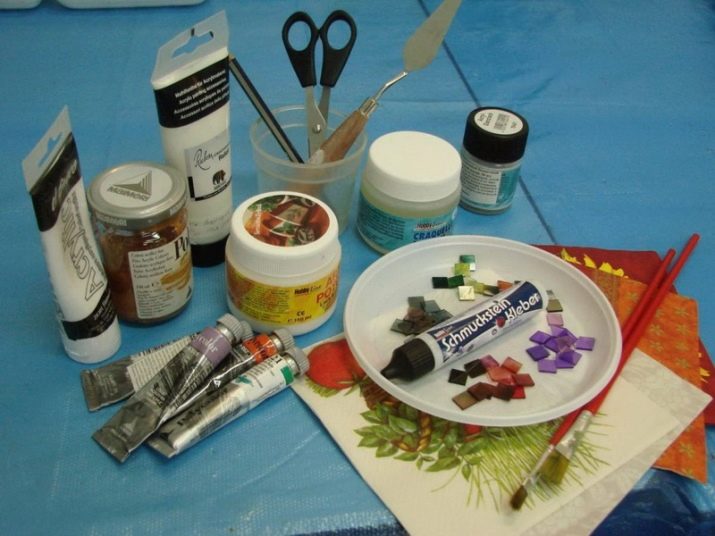
Decoupage materials are easy to find in hardware stores, handicraft outlets and online stores.
How can you transform furniture?
Furniture and household items are most often used for decorating using decoupage technique. Much less often it is used on walls, floors, ceilings, windows.When decorating furniture, you need to understand that not every style in the room is capable of accepting decoupage.
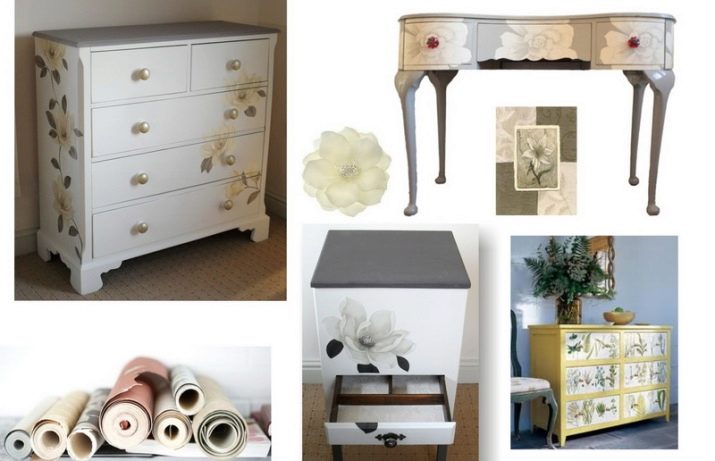
If one of the following directions is observed in the room setting, you can safely start work.
Country
Almost all types of country music choose bright pictures depicting flora, fauna and folk ornaments. Furniture should be simple, decoupage technique will help give it a century-old look, simulating cracking of varnish and paint.

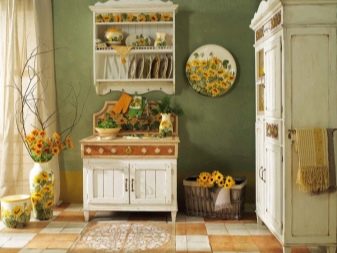
Provence
The style of the French village also belongs to the rural areas, but unlike country, it is characterized by gentle pastel colors and bleached surfaces. For furniture you can choose artificial aging method and color print.
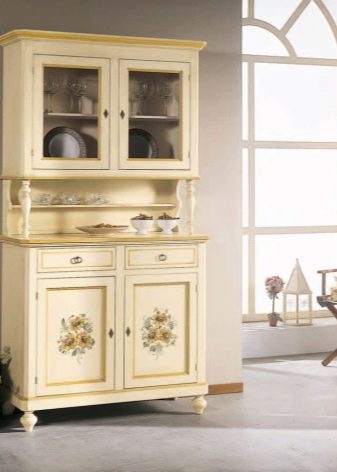
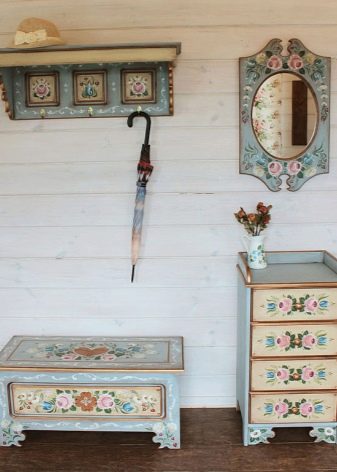
Shabby chic
Furniture in this direction, at first glance, is difficult to distinguish from the Provence style, the same whitewashed, aged and in pastel colors. The difference is that Provence items should have a simple rustic look, and the shabby chic furniture is more like antique, imitating the atmosphere of a rich past.
In decoupage of this style, techniques of blurred borders and scuffs are used.
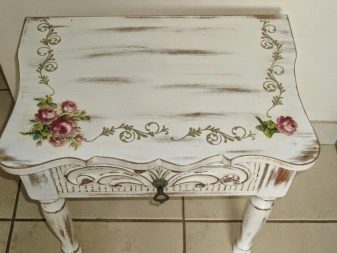
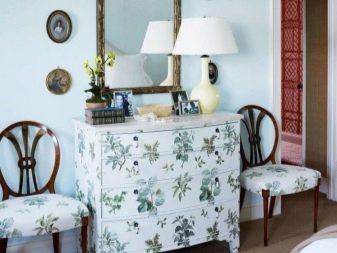
Simple City
To decorate furniture of this style, the decopatch technique is used, this is a kind of decoupage. She represents random gluing of cut or torn pieces of pictures on the surface.
In this case, it is better to use a black and white newspaper version or photographs.
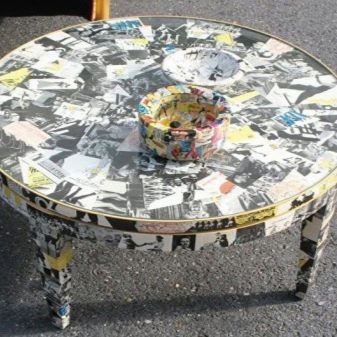
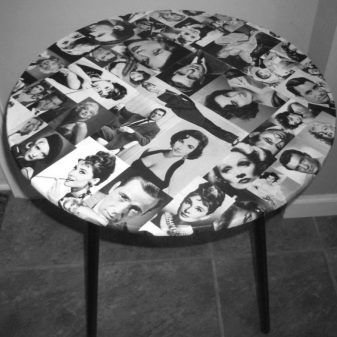
Victorianism
Working with furniture of this style will require certain skills. Possibly the use of gilding (the thinnest metal sheets imitating a gold surface). Victorianism is characterized by gold, green, blue shades.
Choosing pictures, you can pay attention to the plots of hunting, floristry, still lifes.
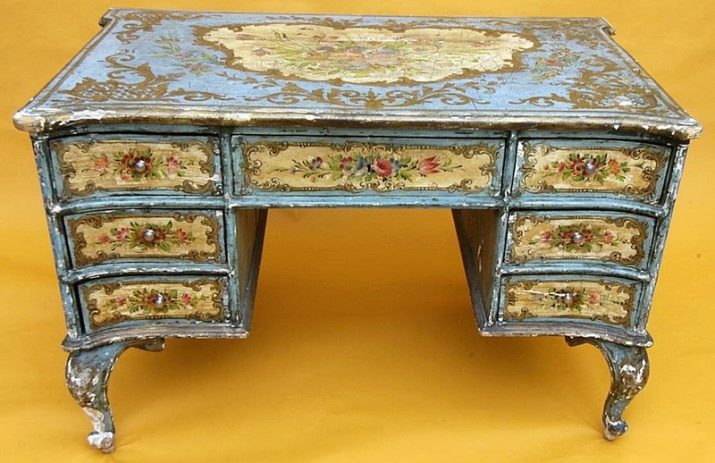
French vintage
The furniture decor uses black and white versions of pictures; you can connect pastel colors.

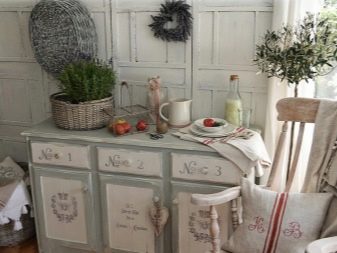
If one of these styles is present in the decor, you can start transforming the furniture. Consider the main process of working in the decoupage technique, it is used for any pieces of furniture and things that need decoration. Small differences will be taking into account the material (wood, glass, plastic, metal), as well as in the use of additional techniques (craquelure, patina, gold leaf). In the future, we will only make corrective descriptions of working with the floor, door, etc.
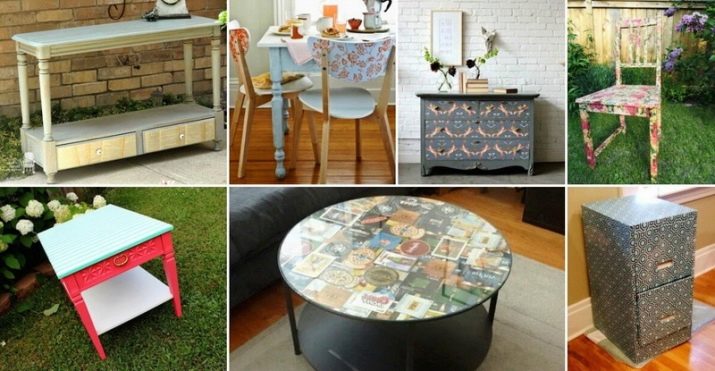
So, the sequence of actions in the work of decoupage technique is as follows.
- Remove all fittings from the surface of the furniture, clean it of old paint and sand it.
- Cover all cracks and crevices with putty, and then prime with an even layer.
- After drying, apply several coats of tonal acrylic paint.
- Sliding surfaces (glass, plastic, ceramics) should be degreased with alcohol, tin surfaces - with water and vinegar.
- For better adhesion of the pattern to the surface, it is cleaned with sandpaper.
- Before pasting furniture with pictures, they should be prepared. To do this, soak in water for 20-30 seconds and carefully remove all layers of paper, leaving only the last one with the image. The rolling movements are made from the center to the edges of the pattern.
- Decoupage glue (or diluted PVA) is applied to the surface of the furniture and the image is carefully glued, collecting it from fragments of pictures. Each piece of the drawing is carefully smoothed out with a damp brush.
- After drying with the applique, you can work in any technique: paint on with paints, shade the background, age with craquelure varnish, apply mother-of-pearl, gilding.
- After complete drying, the work should be covered with several layers of varnish.
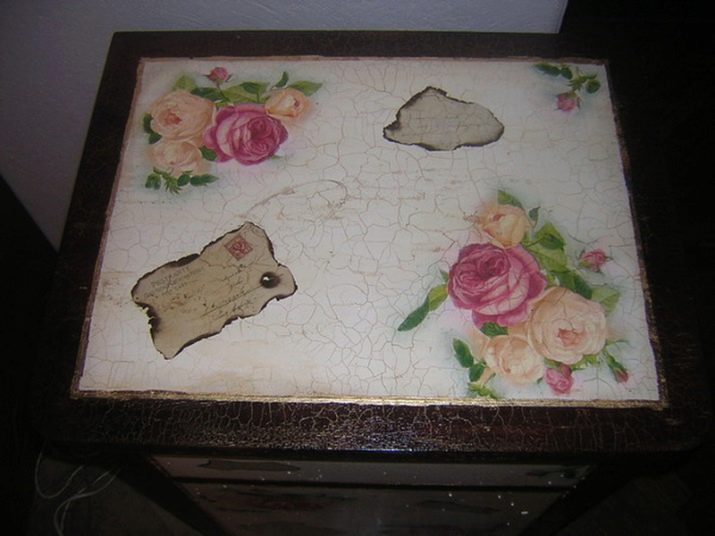
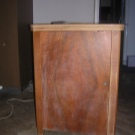
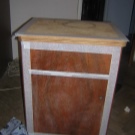

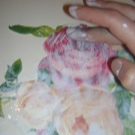
How to decorate doors and windows?
The interior is very impressive, in which decoupage doors and windows support each other with a single style. But if you don't have the strength for grandiose projects, you can only decorate the window frame or part of the glass. The door will also look great in the performance of decoupage technique.
Especially it should be decorated if it has lost its attractiveness or is tired of its color, it becomes possible to update the design without much material costs.
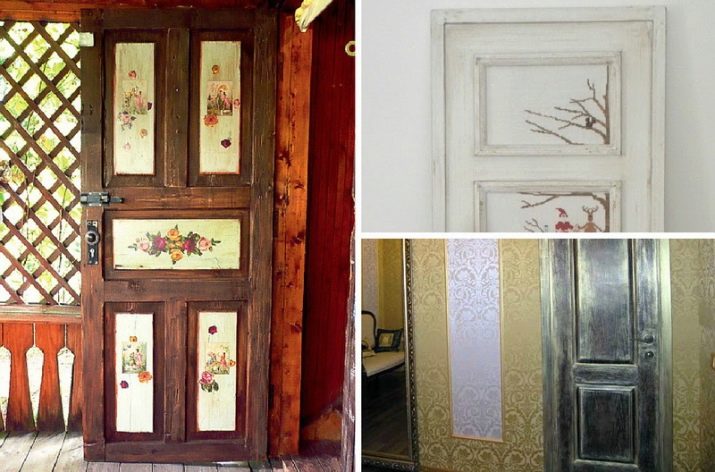
Door
The door can be the starting point to further switch to pieces of furniture and make a cozy room in the Hand made style. Let's consider a step-by-step method of decorating a door leaf.
- For high-quality work with the door, it is better to remove it from the hinges, otherwise the process will become long and painful.
- Old paint is removed from the surface, then the workpiece is washed and dried.
- The canvas is leveled with a primer.
- The first layer of acrylic paint should be white to neutralize the effects of the primer.
- Then a tonal acrylic layer is applied, which will be combined with the picture.
- When the door dries out, the cut prepared drawing is fixed on its surface with the help of glue. Applications can be not only made of paper, but also on a fabric basis.
- Using a damp soft brush, gently smooth out the image, expelling excess glue and air bubbles.
- If the drawing did not fit perfectly on the door, you can touch up it with a brush and paints.
- At the last stage, several layers of varnish are applied, which will not only give the canvas a beautiful finished look, but also protect it from dust and dirt, from scuffs and scratches.
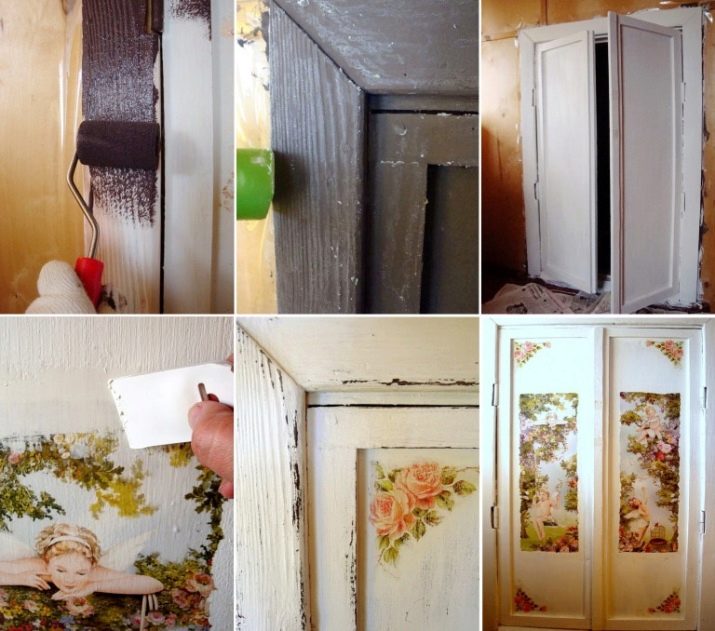
It is more logical to use the decoupage technique on interior doors. But some craftsmen decorate the entrance to the house with them. Let's take a look at the pictures of the door decor to get a better idea of it:
- impressive is the refined fragile chamomile bush on a canvas of unstable green color with elements of a yellow tint;
- gilded decoupage for the imperial style (empire);
- entrance door of a heavenly shade, made on the theme of floristry;
- fragments of the door, decorated with decoupage technique.

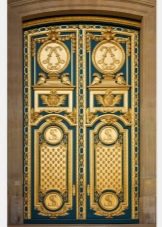

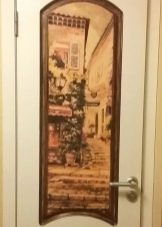
Window
Sometimes, using decoupage technique, they cover the glass surface of a window or part of it. This technique is justified only in hot climates, since the glass becomes less transparent. In other cases, only the frame is decorated. Plastic windows or old wooden frames can be used. The latter will have to tinker with. During the repair, it is better to remove them from the window opening and completely renew them: clean them of old paint, sand them, prime them. Before decorating, plastic surfaces must be degreased with acetone.
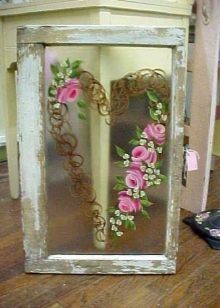
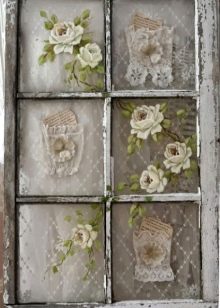
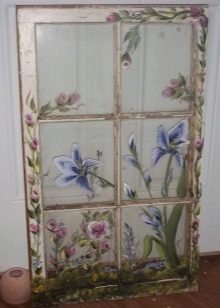
Prepared layered napkins are cut into strips to fit the width of the frame. Apply to the surface and coat first with a damp brush to level, and then with glue. In the process of work, you need to follow the sequence of the drawing. Pay special attention to the places where the fittings are located. After a day, the product is varnished. The window takes on a unique look and is eye-catching.
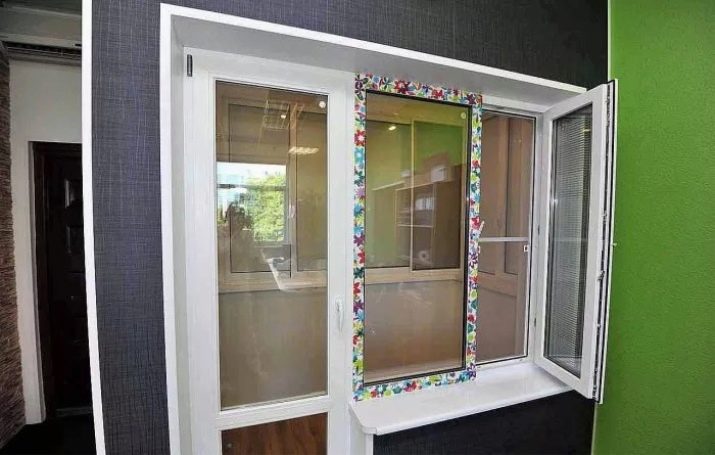
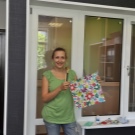

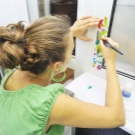
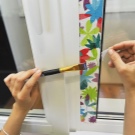
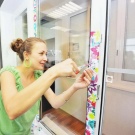
Ideas for floors and walls
It is common to see furniture decorated with decoupage technique, or thousands of cute little things: vases, plates, boxes, notebooks, gift boxes. But decoupage on the floor seems incredible. Will the thinnest paper be able to withstand the stress that falls on the floor every day? It turns out that with the right approach to business, it will not only withstand, but also hide all the unevenness of the flooring.
Walls made using decoupage technique are also rarely seen. The door can be removed from its hinges, put in a place convenient for work and decorated. Such manipulations cannot be performed with the wall, you have to adapt to the vertical canvas.
Those who succeed in this end up with an amazingly beautiful surface.
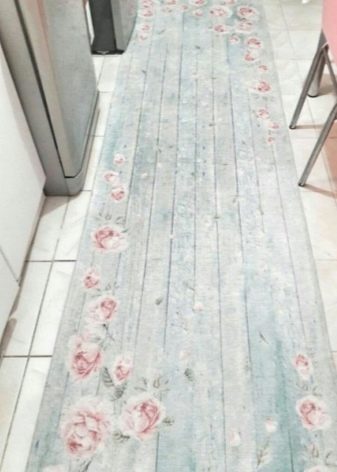
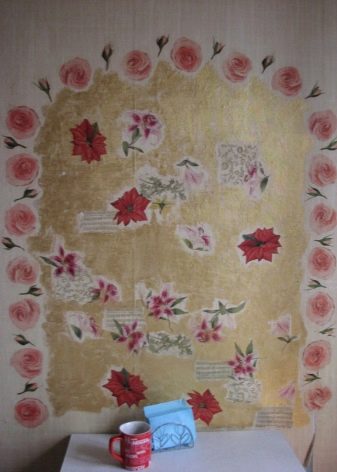
Floor
If you are going to transform the floor, you need to decide for yourself whether the work will take place on the entire coating or in fragments. For example, old linoleum can be updated by hiding only stains and scuffs under the appliqués. Working in decoupage technique over a large surface, it is necessary to use a varnish for the floor covering, it will fix the pattern well and is guaranteed to prepare the floor for daily use.
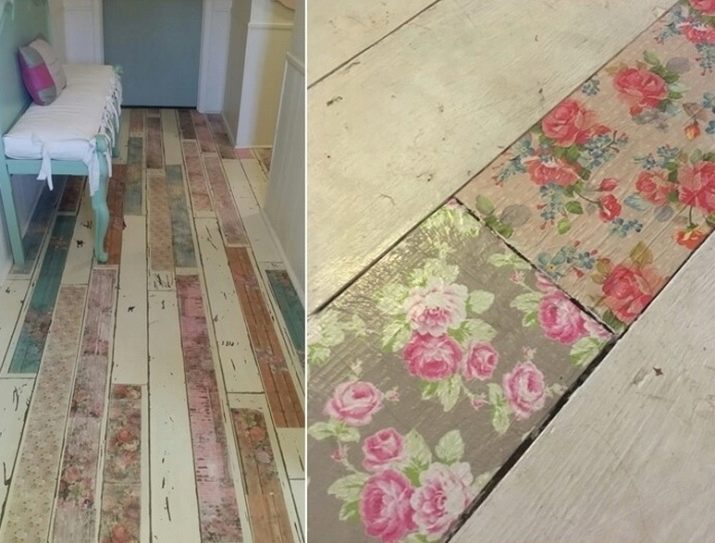
Let's consider one of the ways to decorate the floor with different techniques. An ornament is made around the perimeter of the room with the help of appliqués, and the central part is decorated with coloring through tulle. The step-by-step actions are as follows.
- The wooden floor is prepared for work by grinding. The surface is completely freed from old paint.
- With the help of masking tape, cover the floor by 30-50 cm around the perimeter - the part on which the ornament will be located.
- The covering in the center of the room is treated with mahogany stain. Tulle is laid out on a dry surface and a bronze-colored spray paint is sprayed on top.
- After removing the tape from the curb, it is treated with a white stain to create contrast and left to dry completely.
- On the prepared light border of the floor, they work with the decoupage technique. Cut out applications are planted on glue, a layer of decoupage varnish is applied on top.
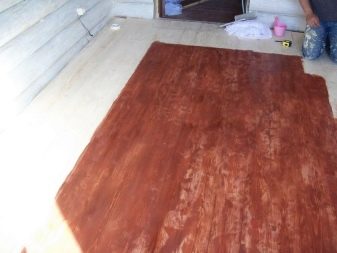
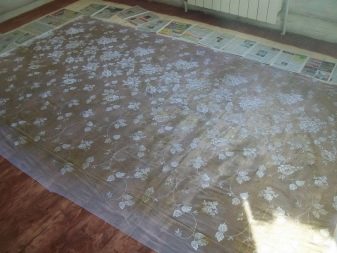
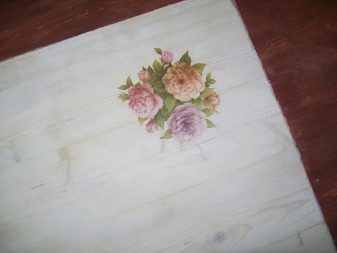
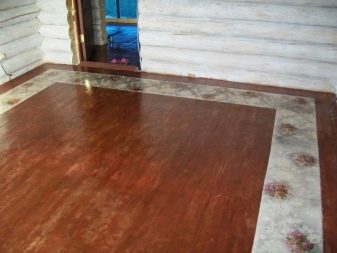
To understand what a decoupage floor looks like, consider examples in the photographs.
- The surface is decorated in the form of a carpet runner, a contrasting technique is used. A sophisticated oriental ornament looks extravagant against a light background.
- The decor is made in two contrasting shades: dark around the perimeter and light in the center. In the work with the main part of the room, the technique of painting through tulle was used, then applications with the image of flowers were applied.
- The smooth surface is made using the decopatch technique (a kind of decoupage), the floor is completely covered with magazine clippings.
- An example of a deco-patch technique on a plank floor. Each board has its own ornament, and the entire floor surface looks like a patchwork quilt.
- The plank surface is beautifully made in the shabby chic style.
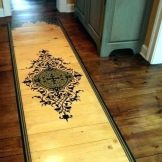
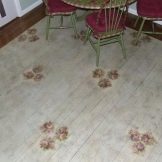
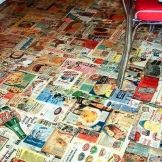
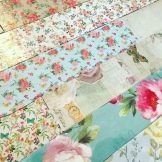
Walls
Decoupage can be done on a small part of the wall or cover all the walls of the room with it. The choice depends on the taste and creativity of the artist. Decoupage technique looks good in small rooms (nursery, bedroom, kitchen, hallway).

In spacious rooms, one wall can be distinguished for decoupage. For urban styles, black and white variations from newspapers and photographs are often used. For teenage rooms, they choose bright fragments from comics. The floral print suits all country styles. If the floristry is done in gentle pastel colors, it is used for the direction of shabby chic and provence. Consider how you can decorate the wall yourself using the decoupage technique at home.
- The surface of the wall is ideally leveled, plastered and primed. Dry it up.
- The picture is chosen according to the style of the interior. The carrier can be magazine clippings, photographs, rice paper, napkins, wallpaper applications and other paper products. In further actions there is nothing new for decoupage technique: cut out, soak and remove the top layer.
- Pictures are placed on the wall using an adhesive base.
- Then a layer of varnish is applied. Decoupage is performed in a horizontal position so that the flowing varnish does not spoil the work. This cannot be done for walls. Apply special quick-drying mixtures, apply gently with a soft brush.
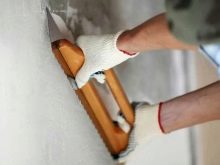
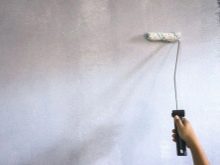
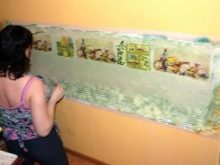
Fragmented decoupage on the walls looks more organic. Let's look at examples of different uses of this technique on wall surfaces.
- On a flat sunny wall is a graceful branch of a blooming magnolia. It fills the void of the surface, but at the same time does not create massive pressure.
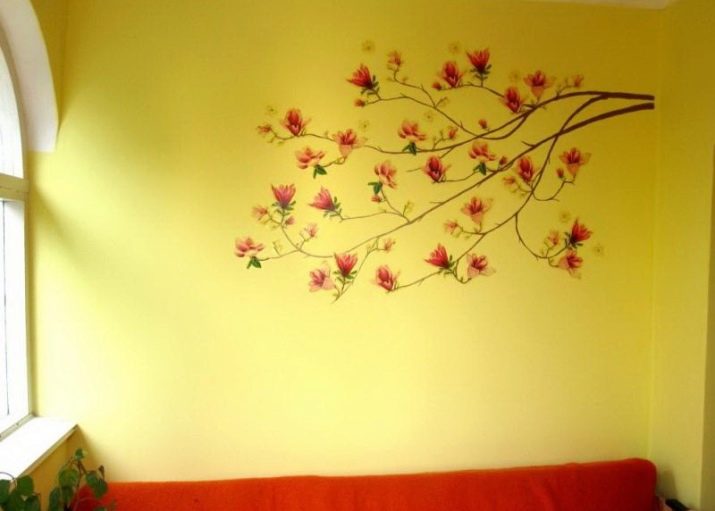
- The decor imitating the aged surface of the wall has been beautifully played out. It unobtrusively goes to the shelf, supported by a vase in the same style.
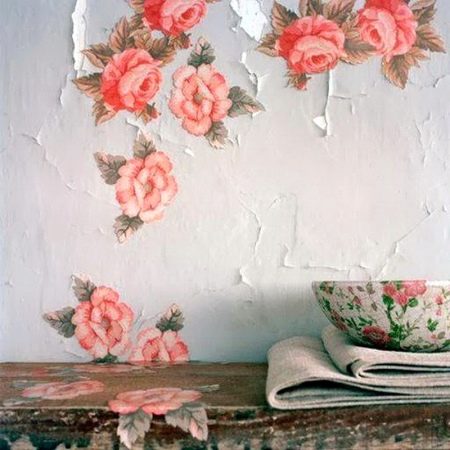
- Imitation of an old fresco on the wall also made using the aging technique.
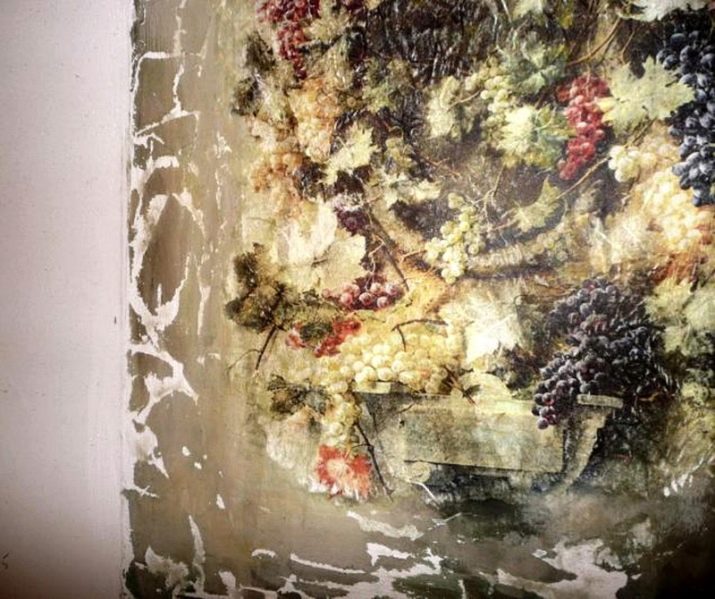
- Volumetric decoupage made with textured paste.

- The image on the wall according to the decoration method may well replace a carpet or a full-fledged painting.
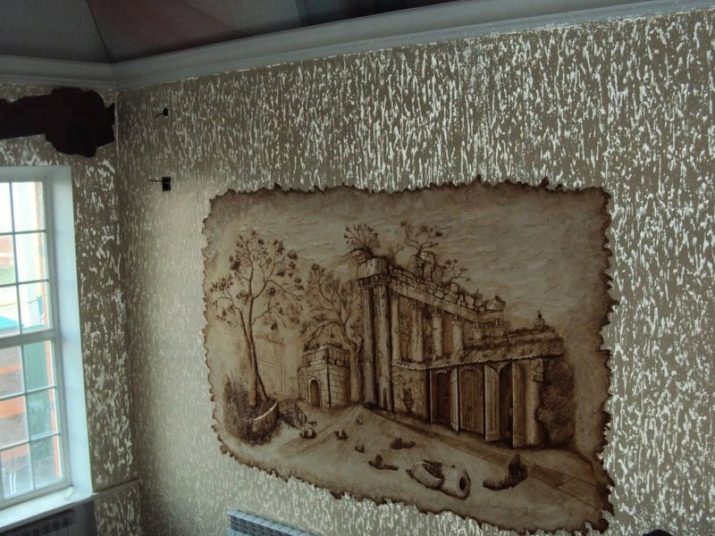
- In creating a bright interior, in addition to paper applications, they use fabric elements.
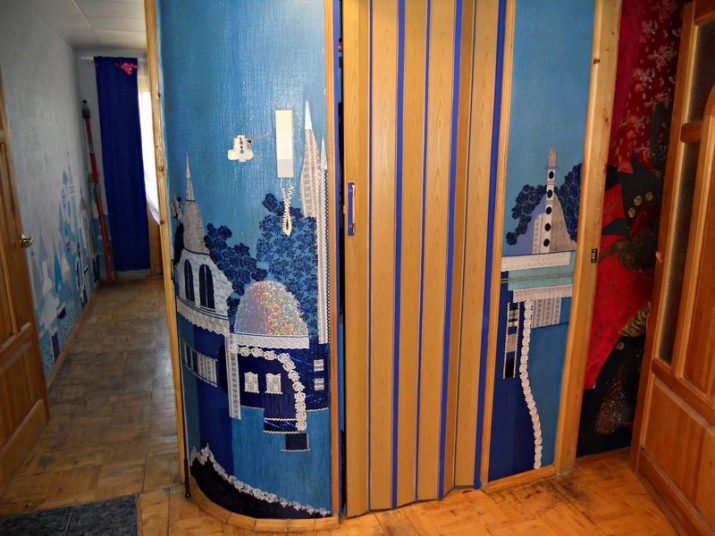
- An example of the use of decoupage technique on all walls of the room.
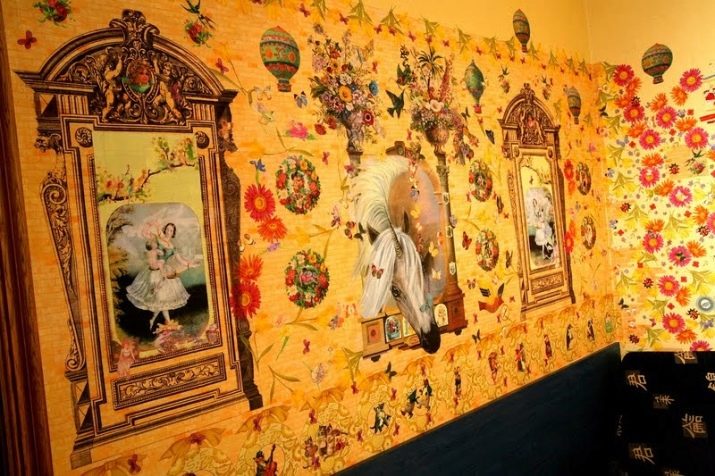
Beautiful options for decor items
Items decorated in the decoupage style can be introduced into the interior as an independent type of decor, and in support of furniture, windows, walls made by a similar method. The main thing is that they do not discord with the situation. Beautiful decoupage options can be found on the Internet, they will inspire you to create your own masterpieces:
- writing utensils;
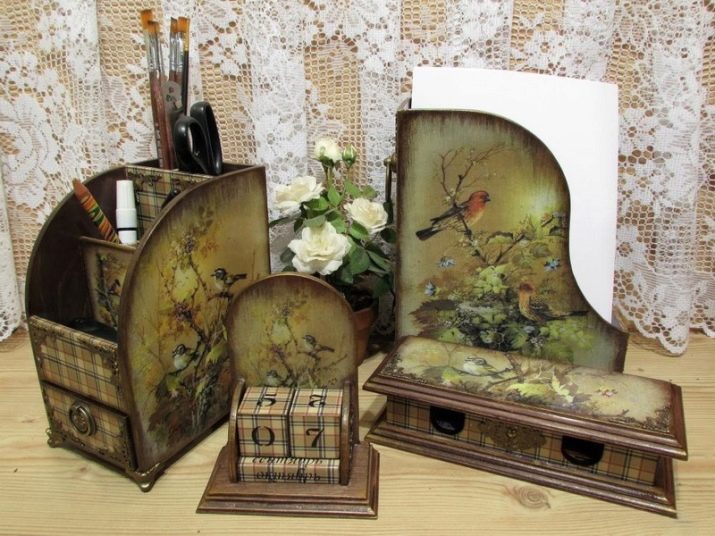
- even an old suitcase can become irresistible in the decoupage technique;
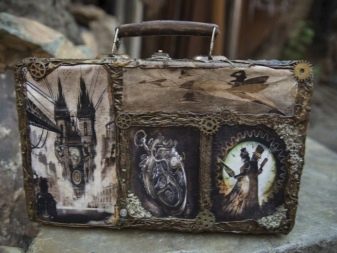
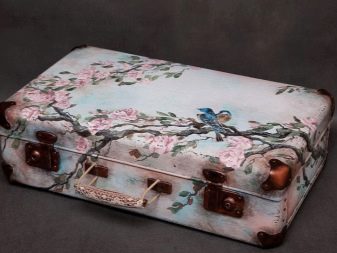
- a decorated computer mouse looks positive;

- country style towel rack;
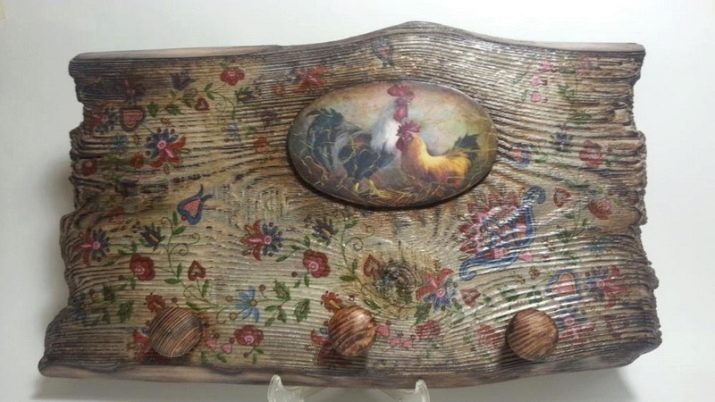
- pair decoupage of wedding champagne bottles for the young.
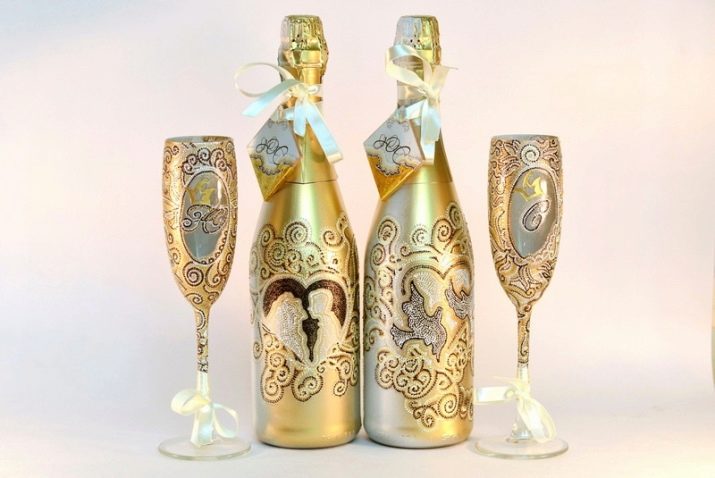
If creativity is inherent in the character, you should definitely try to change the interior with your own hands. The decoupage technique can help with this - an inexpensive and very beautiful way to decorate any surfaces.
For information on how to decorate a wall using decoupage technique, see the next video.








